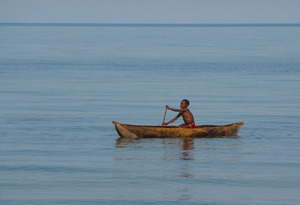Why Malawi?
Friends were curious to know why we’d booked a month in Malawi and to be honest, it was hard to answer. So, when we got to Malawi and everyone asked the same question, we came up with “We love Africa, and having been to many of the more-well known countries, thought Malawi would give us a good blend of safari, nature and beach”.
 Also, we’d seen that Lonely Planet rated Malawi as one of the top ten countries to visit in 2014 for ‘the big five and beach life without the crowds’: we were keen to see whether this had changed.
Also, we’d seen that Lonely Planet rated Malawi as one of the top ten countries to visit in 2014 for ‘the big five and beach life without the crowds’: we were keen to see whether this had changed.
It was easy to understand people’s fascination as, whilst we met many foreign aid workers, the few tourists we encountered were mainly European. The only Brits were two ladies having a few days relaxing by the lake after a Zambian safari.
Geography
Lake Malawi, the third largest in Africa, dominates the long narrow, land-locked country which borders Tanzania, Mozambique and Zambia. It’s smaller than England, diverse and easy to explore by road.
Getting there
As there’s no direct flights, we flew British Airways to Johannesburg and into Lilongwe with South African Airways and returned from Blantyre with Kenya Airways and BA, via Nairobi.
Central African Wilderness Safaris
Following a Silver Traveller recommendation, we booked directly with the Malawian Central African Wilderness Safaris (CAWS). Having read the excellent Bradt Guide, we listed what we wanted to see and after a few iterations, we had our tailor-made tour. This was the first time we’d not used a UK based agency, and it was slightly daunting transferring large sums abroad, especially when our payment in the local currency, the Kwacha, was rejected as they wanted dollars.  However, everything worked out well and as there’s only a one-hour time difference, emails and queries were dealt with by return.
However, everything worked out well and as there’s only a one-hour time difference, emails and queries were dealt with by return.
We had our own driver/guide throughout our trip. His name, Everlasting, was highly appropriate as his tales were everlasting: he would have been great on Radio 4s ‘Just a Minute’ if it was called ‘Just an Hour’. However, Everlasting was a mine of information with a keen interest in birds, animals and nature.
Climate
Our visit in September, was in Malawi’s hot, dry season, just before the November rains. Generally, temperatures were around 28° but in the northern Nyika National Park, where we were at over 2000m, we were glad of jumpers and log fires at night. In stark contrast, we struggled when temperatures in the southerly Sunbird Thawale reached nearly 40°.
Travelling internally
 Because of the country’s size, we travelled by road with some journeys up to 7 hours. It wasn’t the distances involved, it was the poor condition of many roads, which were little more than dusty tracks. When travelling to Nyika, we stopped in a small town where Everlasting bought plastic bags to wrap our suitcases in, which were in the enclosed back of the Nissan pick up. We thought this a little unnecessary until we saw the black plastic covered in red dust when unpacking.
Because of the country’s size, we travelled by road with some journeys up to 7 hours. It wasn’t the distances involved, it was the poor condition of many roads, which were little more than dusty tracks. When travelling to Nyika, we stopped in a small town where Everlasting bought plastic bags to wrap our suitcases in, which were in the enclosed back of the Nissan pick up. We thought this a little unnecessary until we saw the black plastic covered in red dust when unpacking.
A strong constitution was required, and not just to deal with the bumps and ruts which provided ‘a free African Massage’. Loos were few and far between and their condition varied enormously. Those at petrol stations were the best, whilst some were literally a hole in the concrete floor. Likewise, lunch stops were scarce, and we took picnics from the lodges which were excellent but eaten in petrol station and hotel car parks, the roadside and a burnt stubble field.
Accommodation
Apart from Blantyre, where the Protea Hotel was of an international standard, we stayed in a variety of comfortable small lodges and tents. The smallest, Zomba Forest Lodge, had only four rooms and was literally a home from home, whilst Kumbali Country Lodge in Lilongwe, is where Madonna is said to stay. At Mvuu and Chelinda, both places owned by CAWS, we were offered upgrades from the cheaper camp to the lodge.
 Some places, including Mumbo Island, had no electricity, but solar power and candles proved adequate, even for charging the plethora of batteries now required for phones, cameras etc. However, we were totally unprepared for frequent, unexpected power outages that occurred in virtually every location.
Some places, including Mumbo Island, had no electricity, but solar power and candles proved adequate, even for charging the plethora of batteries now required for phones, cameras etc. However, we were totally unprepared for frequent, unexpected power outages that occurred in virtually every location.
Food and drink
Malawi’s national dish is nsima, a bland stodgy dish made from maize flour mixed with water, which is eaten at least twice a day with vegetables and occasionally meat. Hotels tended to serve a variety of western dishes and English breakfasts were excellent and ubiquitous. There was little pork as 13% of the population are Muslim, but fish fresh from the lake abounded.
Although South African wine was available, it was limited or expensive, but we really enjoyed the locally distilled Malawi Gin and Tonic. Carlsberg has the monopoly on beer which is known simply as a ‘Green’ after the colour of the label.












